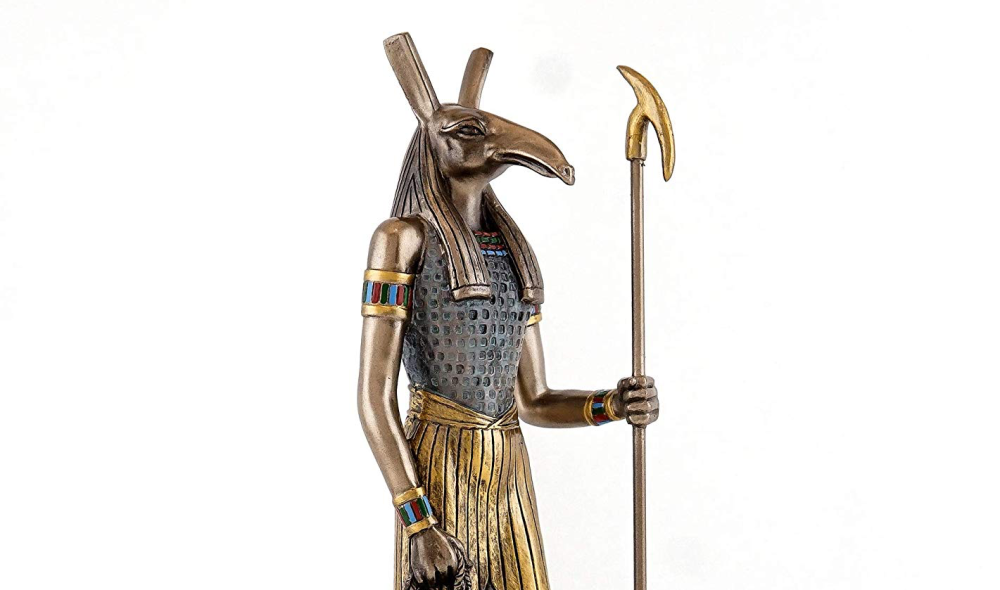A contemporary folk etymology that connects Saturn to the Hebrew word Satan, שָׂטָן, meaning adversary or accuser, seems worthy of consideration as no convincing etymologies for the word Satan appear.[1] Again, this assumes a late development of the Hebrew Bible, which this study does.
Etymologists believe Saturn originates from the Etruscan subterranean deity Satre whose name meaning is unknown. It certainly seems possible, if not likely, that they represent essentially the same chthonic deity particularly since the Etruscans appear to have had a crypto-Jewish or proto-Jewish element. Though this derivation is of course undisruptive to the idea that the word Satan is also related to Saturn. Rather its possible all words share a common root.
In the New Testament Satan appears in the Greek as Diabolos, διάβολος, and Satanas, Σατανᾶς. The names appear to describe a figure who is also the serpent in the Garden of Eden. Famously in John 8:44, Jesus accuses Jews who he is imploring to “accept his message” as being the children of diabolos. The interaction in John is worthy of close study but ostensibly this would give these Jews, at least in these passages, the same relationship to Satan that Tacitus’ Histories speculatively gives them to Saturn.
In Revelation 3:9 the Greek word Satanas is used in the famous passage: “Look at those who belong to the synagogue of Satan, who claim to be Jews but are liars instead.” Here it is important to note a distinction is actually being made between Jews and liars who belong to the Synagogue of Satan, something Christian anti-Semites always overlook or fail to mention. But this passage makes sense as Christ himself was a Rabbi.
To be clear, to the extent we understand Saturn as akin to Satan, this is in no way disruptive of the idea that Saturn is a proto-Jewish God which appears unequivocal. Again, JEM commonly reveals caducean conflicts between two factions that are ultimately pro-Jewish, whether between Yahweh and the Serpent in the Garden of Eden or between Christ and Jews in the New Testament. It may, however, suggest Saturn as closer to Vulcan or the Demiurge in gnostic teachings versus a charismatic Adonis-like Dying-and-Rising “Love God.”
In any case, the Greek Satanas might be suggestive of “Saturnus,” the name of Saturn in Latin. Certainly in the Roman Empire, where Christianity would gain its foothold, it seems the name Satanas would conjure this pantheonic and well known Saturnus to mind. Indeed, Saturn enjoyed a salient temple at the western end of the Roman Forum at the foot of the Capitoline Hill from the 5th century BC into the 4th century AD. Presumably only the most ignorant Latin speakers would be unfamiliar with this major, central deity.

Saturn’s temple was used, for at least a period, as the “Aerarium” or state treasury as Saturn, God of the “Golden Age,” was understood as a wealth God. Here the Roman reserves of silver and gold were stored. With Aerarium perhaps we are reminded of the later Norse myths of golden ring hordes protected by dragons such as Fafnir who was formerly a dwarf. Both Dwarfs and Dragons become Semitic figures in our understanding.
Whether such likely Jewish myths drew inspiration from similar ancient treasures is, of course, speculation. However that such treasuries in Rome were dedicated to Saturn might suggest a crypto-Jewish influence hinted at through REM or mysterious allusion. To be clear, this would not necessarily be moralizing to Jews, who would be indicated as money handlers below a marital, Aryan noble class represented by figures like Jupiter.
The devil of the New Testament likewise appears attached to a worldly, materialism particularly in contrast to Christ. This is especially apparent in Matthew 4:9, for instance, where Satan promises Jesus all the kingdoms of the world (kosmos), if Christ will fall down and worship him. Jesus declares “Away from me, Satanas!” There is likely more to the episode when Christ chases the moneychangers out of the temple in Jerusalem. However when the parable is taken at face value, this “market place” temple is perhaps suggestive of a Temple of Saturn.
Though a temple that is a “market place” and a “den of thieves” also conjures the Semitic Mercury to mind who was known as Mercury Agoraeus,[2] the God of Merchants and Mercury Archus Pheleteon,[3] God of Thieves. Mercury too enjoyed an ancient temple in Rome, his on the Aventine Hill dating back to 495 BC.[4] In revelation 12:9 the Devil is referred to as the “ancient serpent,” “Diabolos,” “Satanas” and “the deceiver (planaó) of the whole world.” In 1 John as well the antichristos or “anti-Christ” is also described as “a liar” and “the deceiver.” Mercury, with his serpentine caduceus, is commonly guessed to have developed from earlier serpent Gods. Mercury was also known as Mercury Clepsiphron[5] or Mercury the Deceiver.
Indeed, one obvious example of a “proto-Mercury” was the Egyptian Heka, who is said to have killed two serpents and entwined them on a staff. This is often believed to be the origin of Mercury’s caduceus. Speculatively, we might guess a Hebrew name for temple, Hekal, הֵיכַל, which is of an unknown origin, is related to Heka, a God of Magic, Medicine and Healing. This study argues that Mercury represents a Priest type as well as a Magician type, to which figures like Aaron and Moses are related. Certainly the God Heka would also represent something similar. [6]
Hence it may make sense that a Hebrew name for a temple might develop as a reference to some Mercury equivalent like Heka. Given the character of these deities it would tend also to reveal a utilitarian cynicism toward Religion found throughout JEM as this study demonstrates, where it is acknowledged as magic or deception. Possibly the Semitic figure of Hecate/Hekate, a Psychopomp similar to Mercury, is also related to Heka and Hekal. Etymologists guess Hecate’s name is related to hekas, ‘εκας, meaning “far off” but this meaning seems unrelated to her Religious and Cultural function.
Possibly the name of the Egyptian God Set or Seth is related to Satan. And again one derivation does not exclude the other, as names may be intelligently developed as double references perhaps with the intention of magnifying a subliminal impact or simply for the sake of making an especially clever reference. This study suggests that the Biblical figure of Sheth or Seth, שֵׁת, brother of Cain and Abel, is related to the Egyptian God of the same name. Indeed Seth or Set was the deity of the Hyksos, a group this study classifies as proto-Jewish. Set, as a deity we understand as proto-Jewish, is not unrelated to Saturn at least according to Interpretatio Romana. For instance, the Greeks associated the son of Saturn, Typhon, with Set.

A Biblical Hebrew word set, שֵׂט, distinct from the name Seth, appearing in Hosea 5 means “revolter,” “swerver” or “deeds that swerve” (i.e. sin). It is related to sut, שׂוּט, meaning “to swerve” or “fall away” and carrying similar connotations. Speculatively Satan is a portmanteau of Seth, שֵׁת, or set, שֵׂט, and Tan, תַּן, meaning “Jackal.” Tan shares a root with Tannin, תַּנִּין, meaning “serpent,” “dragon,” and “sea monster.” Tannin is also sometimes translated from the Hebrew Bible as “jackal.”
Here it is useful to understand that the God Set or Seth was represented by a Jackal in Egypt, while his equivalent, Typhon, as a serpent or sea monster by the Greeks. Anubis was the Greek name for another Jackal-headed Egyptian God associated with Pluto or Mercury and understood as a God of Death, mummification and the underworld. In The Omen film series (1976-2016), developed by Jewish creator David Seltzer, the child Antichrist Damien Thorn, is discovered to have jackal blood and is the son of Satan and a female Jackal. Perhaps Seltzer was thinking of the Hebrew Tannin.
[1] The Shiite writer “Perseus,” author of Iranian Sun, first suggested this possible etymology to me.
[2] Agoraeus means of “the market place.”
[3] Archus Pheleteon means “leader of thieves.”
[4] Samuel Ball Platner, s.v. Aedes Mercurii, in A Topographical Dictionary of Ancient Rome, Londra, Oxford University Press, 1929, pg. 320
[5] Clepsiphron means “deceiver.”
[6] See the chapter entitled Mercury: The Philosopher, Priest, Biblical Prophet, Apostle and Wizard in this book.
Great article.
LikeLike